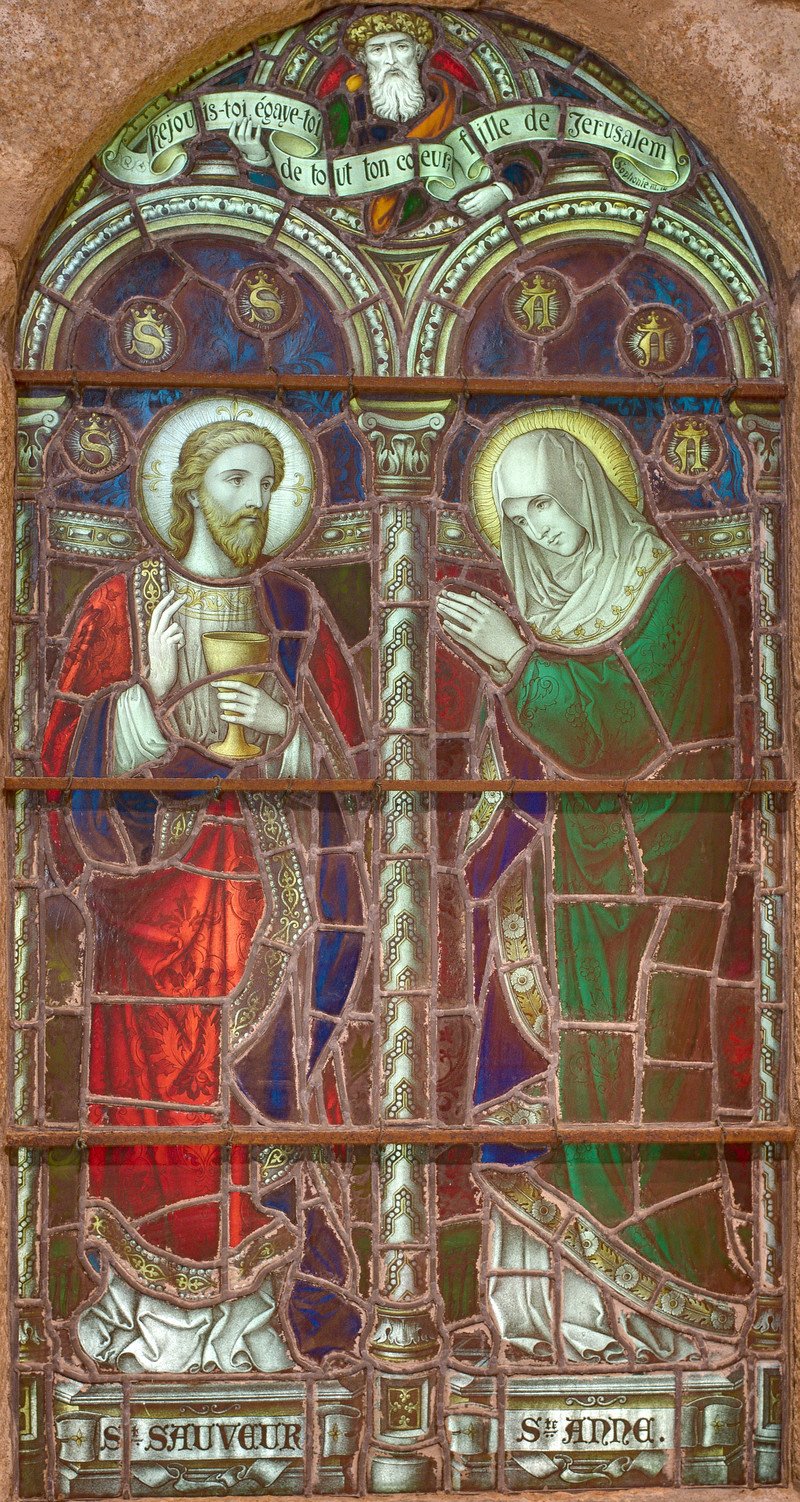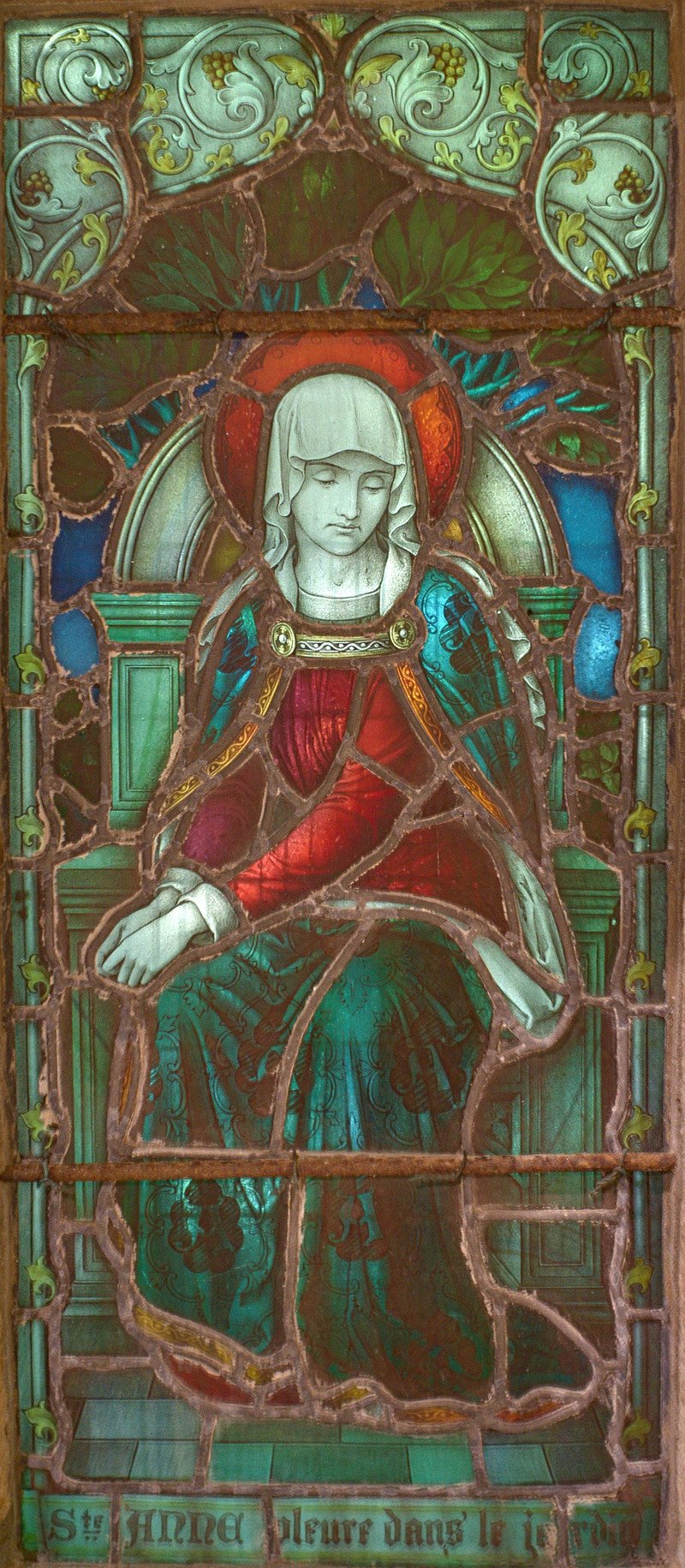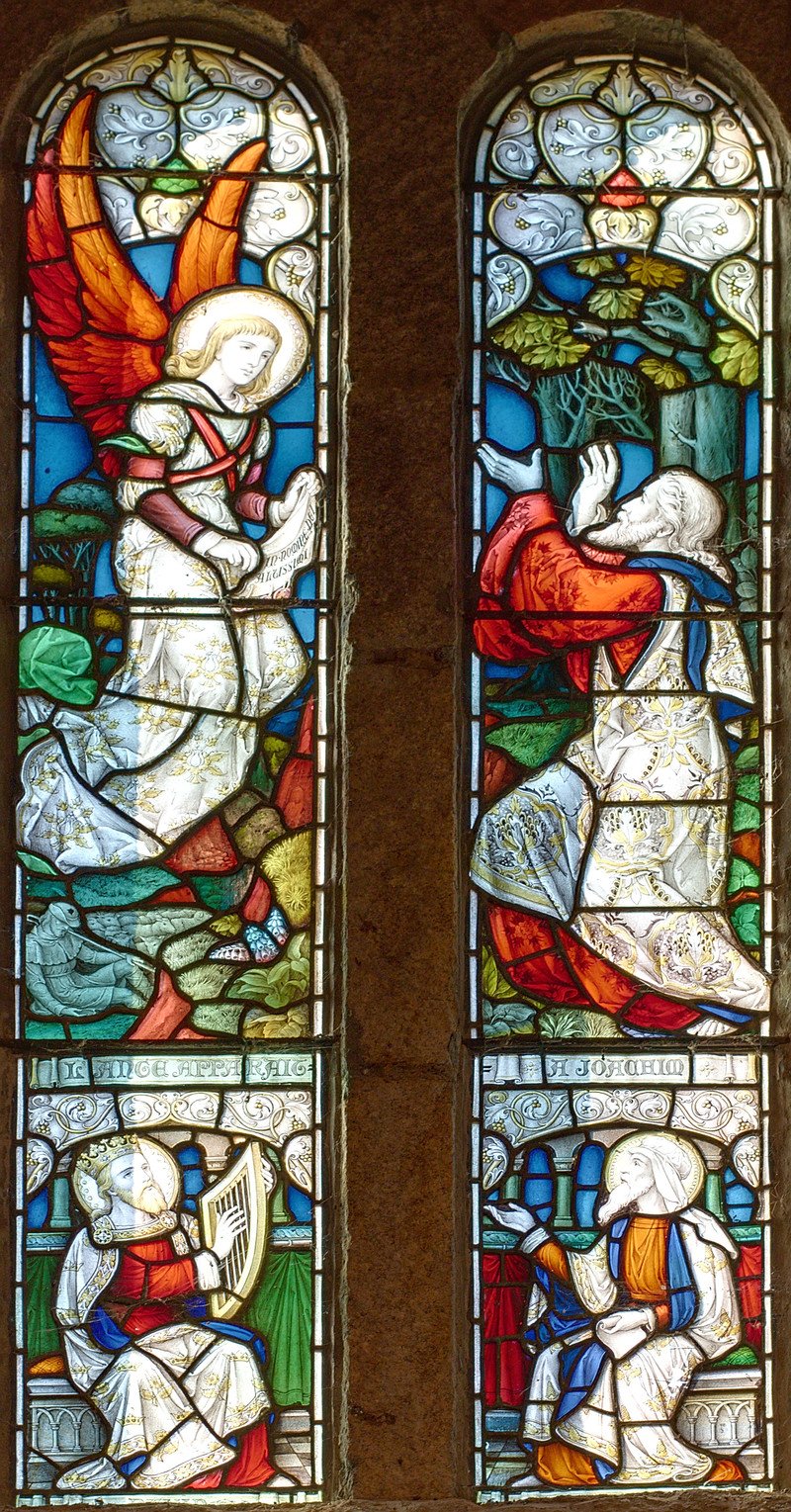The Saviour and St Anne
A single window in a Norman arch, depicting Christ the Saviour holding a chalice and St Anne, mother of the Virgin Mary, turned towards her grandson with hands joined in prayer. Her head is beautifully drawn and her robes are in a striking combination of apple green and dark blue.The head of each figure is surrounded by medallions with identifying initials: S for St Sauveur and A for St Anne. Above them is the half figure of the prophet Zephaniah, wearing a crown of yellow leaves and holding a long scroll bearing the words from his own writings: “Réjouis-toi, égaye-toi de tout ton coeur, fille de Jerusalem” Sophonie 3, v.14.
What we know about the life of St Anne and her husband Joachim comes from the Protoevangelium of St James the Less, an early writing which is not part of the bible and is therefore considered as legend. St Anne is venerated and loved in Brittany and she is the patron saint of that part of France. Her great shrine is at Auray and her feast day is 26th July. Her help is particularly solicited by childless couples and by young women in search of a husband.
Position: East wall, behind the altar





